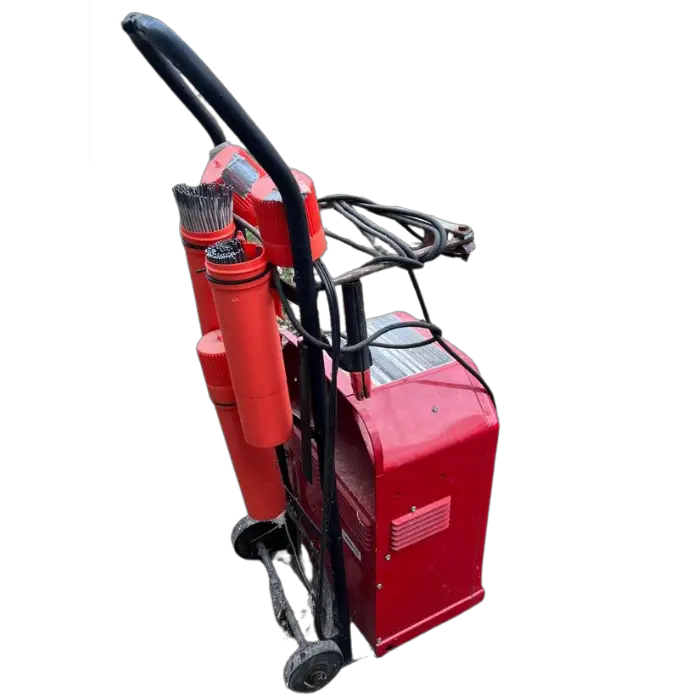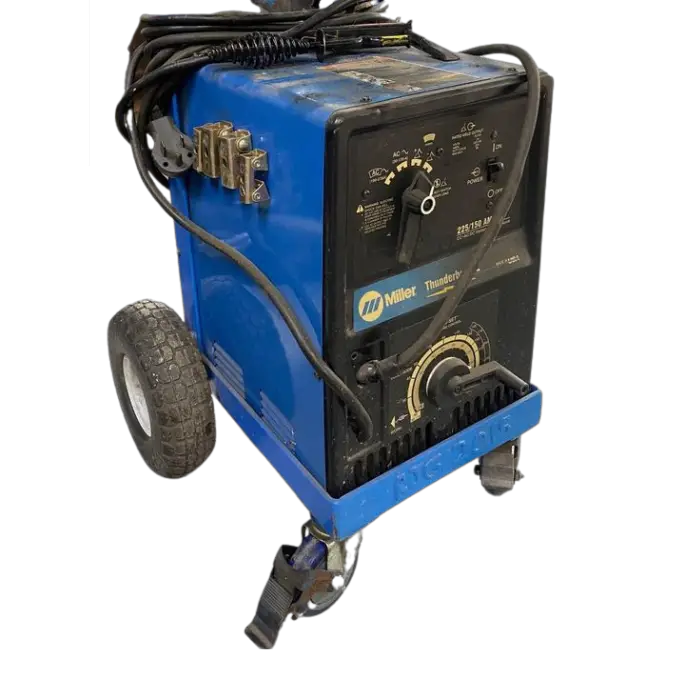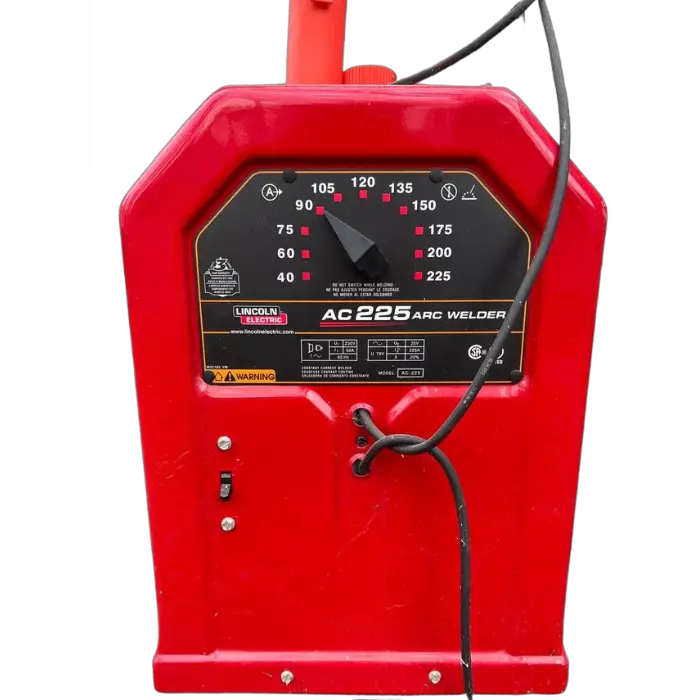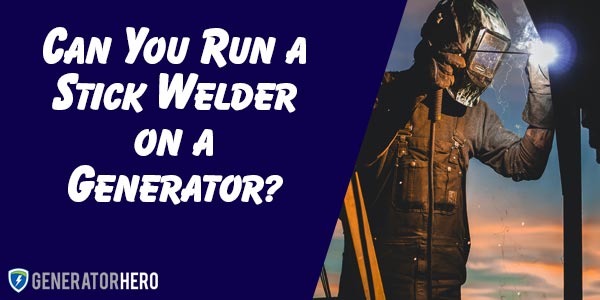Generators are often a popular choice for powering construction sites, as well as for DIY construction at home. Therefore, a common question we hear is can you run a welder off a generator?
You can certainly run a stick welder on a generator, but you will need to make sure that the stick welder and generator are compatible with each other. Using incompatible generators with your welder can cause huge problems and can even be dangerous. Please read below to find out if your what type of generator you need for your stick welder.
The conditions have to be perfect in order for it to be used safely.
Make sense? It doesn’t matter if that has you confused right now because we are going to be using this article to explain it in more detail on finding the best generator for your welding machine.
We will first be taking a look at what a stick welder is, as well as giving you a very brief rundown of what a generator does, just as a quick refresher. We will then look at how you can run a stick welder off of a generator safely and effectively.

Table of Contents
How to find the best generator for your stick welder
When it comes to running your stick welder on a generator, there are some very important factors that you will need to take into consideration to ensure that it can run safely. You first need to identify some figures from both the stick welder and the generator in question.
What wattage to run a welder off a generator?
First, you should look out for the generator output. This is usually given in watts. The wattage figure is a measurement that is made by working out what the average times the voltage equals.
For example, if the generator for your welding machine has a rating of 4800 watts, then it can provide 40 amps at 120 volts and 20 amps at 240 volts. For this we suggest using a 5,000 watt generator or higher.
There should be two output ratings for your generator, the first is the running watts, and the second is the peak watts. Typically, the peak watts are higher than the running watts. Peak watts can also be called start-up or surge watts.
This is higher so that it can handle the brief spike in output that happens when a moor is first started up.

Ideal stick welder wattage
Next, you need to find out the maximum watts that the welder will draw out. To do this, you can either look at the product listing on the website or in the store you bought it from.
It may even say it somewhere in the owner’s manual or on the welder itself on the data plate. If this is not the case, you will be able to work out the wattage by using the figures given for amperage and voltage. Use the highest figure provided. For example, it may say 240 volts and 25 amps.
You need to multiply these two figures together to get the wattage. In this case, the figure given is 6000, making the wattage 6000 watts. It is worth noting here that many manufacturers do not put exact measurements, or may round up or down. Our advice is to always overestimate.
The wattage amount you get for your welder is the minimum it will need in order to run. In our example, the welder runs at 6000 watts. With this in mind, the wattage needed from a generator would need to be at least 6000, or even higher if possible.

Are you running other tools besides the stick welder?
The final considerations you need to make are whether you will also be running other tools or equipment off of the same generator.
You should do these same calculations for each of the tools or devices you plan to run off your generator and make sure that your generator has enough power for all of them.
Remember what we said in the previous section, it is often far better to overestimate than to underestimate. Underestimating these figures can prove to be dangerous!
You may also want to keep in mind the place you will be working. In higher altitudes, the air is thinner. This means that there is less power. If you think that this is something that could affect you, then it may be worth considering investing in a higher altitude kit from the manufacturer of your generator.
Before we wrap things up let’s just come back around to the basic understanding of the stick welder and the generator.
What is a stick welder?
A stick welder is simply a typical welding tool. It is the informal name given to the piece of equipment used to weld called a shielded metal arc welder, or SMAW. It is the most widely used technique for welding, and stick welders are, indeed, the most widely used tool to do it.
Welding is the process of joining materials through heat and pressure. Typically it is used to join together two pieces of metal, but it can also be used on other materials and surfaces such as thermoplastics.
This means that stick welders are powerful tools, needing an equally powerful source to give them the power to run effectively.
What is a generator?
When we talk about a generator, we are referring to an electric generator. Electric generators are pieces of equipment with an engine inside that produces electricity. They are powered by a fuel source, typically gasoline or liquified petroleum gas (also known as propane).
They can be used as back-up power for homes when the power goes out because of natural disasters and powerline faults. They can also be used to power RVs, camping equipment, and on construction sites to power tools and equipment. They can come in a variety of different sizes, all with different capabilities.
This means some are powerful enough to power a whole home, including the air conditioning systems, lights, refrigerators, and other big appliances. Some generators are much less powerful, and can only power small camping equipment and personal devices.
Now that you have had a refresher on what exactly a stick welder and generator are, we can properly pinpoint the best generator for a welding machine.

FAQ
What size generator do I need to run a welding machine?
Your generator wattage size must be greater than or equal to the wattage of your welder. Check the welder and/or manual to see the total wattage, then start looking for a generator for your welder that can handle the workload.
What is a good generator for a welder?
As long as the wattage of the generator is greater than the max wattage required to run the welder, we suggest a generator from our best generator brands list.
How many watts does it take to run a welder?
Again, first locate the wattage of your welder. From that point all you need to do is make sure your generator is rated at an equal or greater number of watts.
Final thoughts
Above all, our advice will always be to follow any safety instructions set out by the manufacturer of both your welder and generator. In fact, they may even be able to recommend specific generators or welders that are compatible with each other.
We hope that this article has proved very useful and that you now feel confident that you can indeed run a stick welder on a generator, provided the two are safely compatible.

